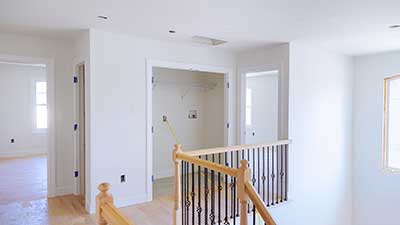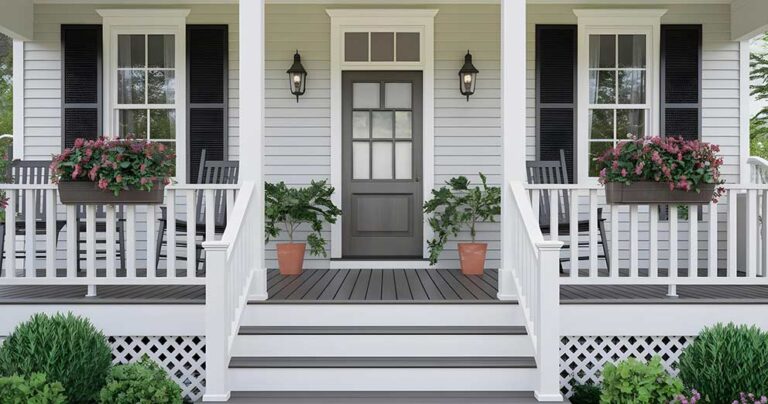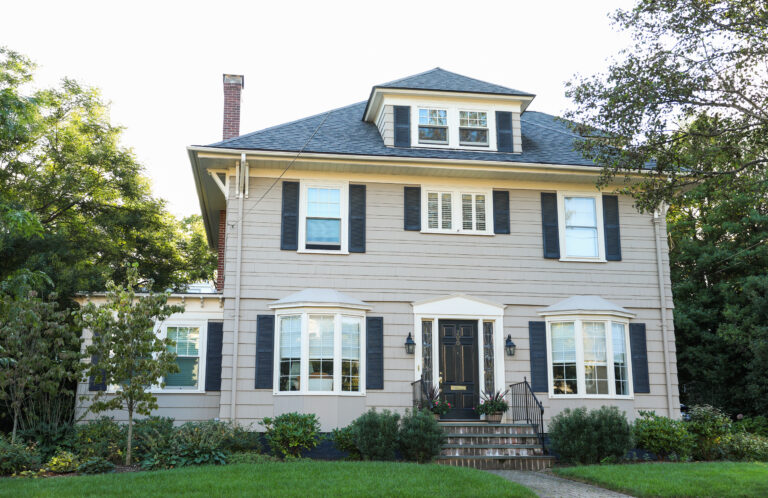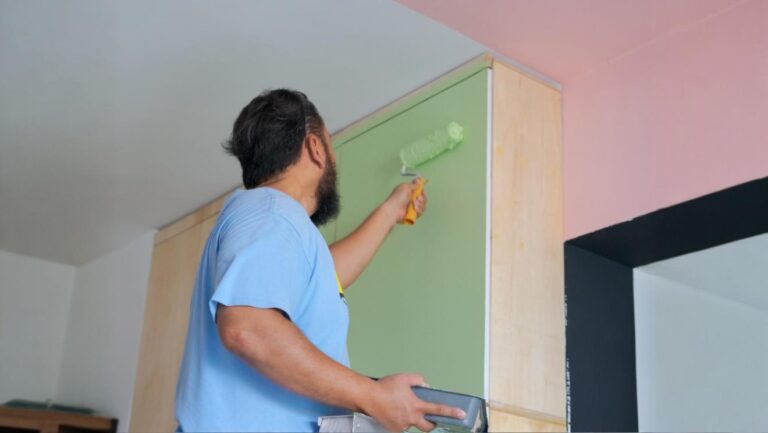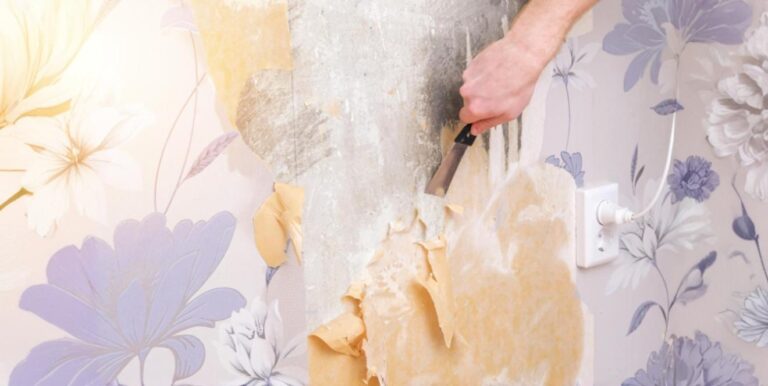When it comes to painting your home, one of the first decisions you’ll face is whether to paint the walls or the trim first. This isn’t just a matter of preference; it can significantly influence the ease and outcome of your painting project. Both methods have their benefits and challenges, and the best choice often depends on your specific project and skills.
The Great Debate: Walls or Trim First?
Most painting professionals, including myself, recommend painting the trim before the walls. The reasoning is simple: it’s easier to tape off the trim than the walls, and you don’t have to worry about perfecting the trim paint job since any splatter on the walls will be covered later. However, patience is vital here; let the trim paint dry thoroughly, ideally for a full 24 hours, before moving on to the walls.
On the flip side, starting with the walls can be more appealing, especially for those who are new to painting or prefer to see quick results. Painting the walls first allows for more flexibility in choosing the trim color later, ensuring a harmonious look in the room.
Preparing for the Paint Job
Preparation is the key to a successful painting job. Gather all your painting supplies – painter’s tape, brushes, rollers, and paint. A good start is to fill in any nail holes and lightly sand the surfaces. A clean and smooth surface is essential for a professional-looking finish. Remember, the effort you put into preparing your space will show in the quality of your paint job.
Step-by-Step Guide to Painting Trim
Start with the trim, using a quality semi-gloss paint that offers both durability and a pleasing aesthetic. Apply painter’s tape to adjoining surfaces for protection. For the best results, use a 2-2.5 inch angled brush for a precise and clean application. Once the first coat is dry, apply a second coat for a flawless finish.
Best Practices for Painting Walls
After the trim is fully dry, you can focus on the walls. Choosing the right type of paint is crucial, as it affects both the appearance and longevity of your paint job. Begin by ‘cutting in’ at the edges and corners with a brush, then immediately follow with a roller, blending the brush strokes. This technique helps avoid lap marks and ensures a consistent texture across the wall. Use drop cloths to protect your floors and furniture, and take your time to achieve the best results.
Choosing the Right Paint and Tools
Selecting the right paint and tools is crucial for achieving the desired finish in your painting project. For walls, consider the room’s function: use a semi-gloss paint in high moisture areas like kitchens and bathrooms, and opt for satin or eggshell finishes in other living spaces. When it comes to trim, a high gloss or semi-gloss finish is ideal as it’s easy to clean and offers a beautiful contrast against the matte walls.
For tools, the choice of brush is important. A quality 2-2.5 inch angled brush is perfect for trim work, ensuring crisp, clean lines. When painting walls, use rollers with the right nap thickness to suit the texture of your walls – a shorter nap for smooth walls and a longer one for textured surfaces.
Painting Techniques for a Professional Finish
A professional-looking paint job is all about technique. When painting trim, maintain steady hand movements for even brush strokes. For walls, start from the top and work your way down, maintaining a ‘wet edge’ to minimize lap marks. Apply the paint in smooth, even strokes, overlapping each pass slightly to avoid streaks. If you’re applying multiple coats, allow the paint to dry completely between coats. This not only enhances the color but also ensures a durable finish.
Dealing with Common Painting Challenges
Painting can come with its set of challenges. Avoiding lap marks, ensuring clean lines where the trim meets the wall, and achieving a smooth finish can be tricky. Using painter’s tape correctly can help create clean lines and protect surfaces. When painting walls, work in small sections and maintain a wet edge to avoid lap marks. If you’re painting over a darker color, using a primer can help achieve true color payoff with fewer coats.
Wrapping Up the First Half of Your Painting Project
By the time you finish the first half of your painting project, your trim should be neatly painted, and your walls should start to show their new color. Remember, the best paint job is the one that’s done with patience and attention to detail. Take breaks when needed and step back to review your work often. This way, you can catch any drips or uneven areas before the paint dries completely.
As you finish up the first half of your project, remember that painting is as much about the journey as it is about the destination. Enjoy the process, and don’t rush – the results will be worth it.
Personalizing Your Space with Color Choices

Choosing the right colors can transform a room, giving it an energy boost and personal flair. When selecting wall paint, consider how different hues will interact with the room’s lighting throughout the day. For the trim, classic whites always work well, but don’t be afraid to experiment with bolder colors for a more dramatic effect. The trim color can create a beautiful contrast or complement the wall color, depending on the look you’re going for.
Timing and Patience: The Keys to a Great Paint Job
One of the most important aspects of painting is timing. Allow enough time for the trim paint to dry completely before moving on to the walls. This patience pays off by ensuring that the paint adheres well and provides the durability you need. Similarly, once you start painting the walls, take your time. Rushing the process can lead to mistakes and uneven coverage. Remember, a great paint job is a result of careful planning and execution.
Advanced Techniques for a Professional Finish
Moving forward in our painting journey, let’s delve into some advanced techniques that can elevate your paint job. When tackling the walls, using a paint edger can help achieve clean, sharp lines near the trim and ceiling. This tool minimizes the need for extra painter’s tape and can speed up the process. Also, for a truly professional look, consider the direction of your brush and roller strokes. Consistency in stroke direction can significantly enhance the uniformity of the paint on both walls and trim.
Tips for Painting in Different Room Types
Different rooms pose unique painting challenges. In high-traffic areas or rooms with moisture, like kitchens and bathrooms, it’s essential to choose a paint that can withstand these conditions. Semi-gloss or high gloss paints are ideal as they are durable and easier to clean. For bedrooms and living areas, a satin or eggshell finish can provide a subtle sheen while still being practical for maintenance.
Final Touches and Cleaning Up
After completing the painting, the final touches can make a big difference. Remove painter’s tape at a 45-degree angle to ensure a clean line. If you notice any paint drips or uneven areas, touch them up with a small brush. Once the paint is completely dry, reinstall any removed hardware, such as outlet covers or doorknobs. Cleaning up is just as important – properly dispose of or store leftover paint and clean your brushes and rollers for future use.
Maintaining Your Newly Painted Walls and Trim
Maintaining your newly painted surfaces will help extend their life and keep them looking fresh. For walls, regular dusting and gentle cleaning of any marks or stains can preserve the paint. Trim, especially in high-traffic areas, might require occasional touch-ups due to its susceptibility to scuffs and marks.
Creative Ideas for Personalizing Your Space
Finally, painting isn’t just about protection; it’s an opportunity to personalize your space. Don’t be afraid to experiment with color combinations or accent walls. For those feeling adventurous, techniques like sponging or color washing can add texture and depth to your walls. Remember, your home is a reflection of your personality – let your walls and trim express that!
Experimenting with Different Finishes and Textures
For those looking to add an extra layer of sophistication to their space, experimenting with different finishes and textures can be a game-changer. Consider using a matte or flat finish on the walls for a modern, sophisticated look, while opting for a semi-gloss or high gloss on the trim for a subtle yet impactful contrast. This contrast not only enhances the architectural details of the room but also adds depth and dimension.
The Role of Lighting in Your Paint Choices
Lighting plays a crucial role in how your paint colors are perceived. Before finalizing your color choices, observe how different lighting conditions in the room affect the color throughout the day. Natural light can dramatically change the appearance of a color, so what looks perfect in the store may look different in your home. For rooms with less natural light, opting for lighter shades can help make the space feel brighter and more open.
Seasonal Painting Tips and Tricks
Painting in different seasons can present unique challenges. In warmer months, avoid painting in direct sunlight as it can cause the paint to dry too quickly, leading to brush marks. Conversely, in colder weather, ensure the room is adequately heated so the paint dries evenly. The ideal temperature for painting is between 50 and 85 degrees Fahrenheit, as most paints apply best in this range.
Personalizing Your Space with Paint
Finally, remember that painting is a powerful tool for personalizing your space. Whether it’s a bold accent wall, a subtle hue that complements your decor, or a bright trim color that pops, your paint choices can reflect your style and personality. Have fun with it and don’t be afraid to step outside your comfort zone. After all, it’s just paint – it can always be changed!
With these tips and techniques, you’re well-equipped to tackle your next painting project with confidence. Whether you paint the walls or trim first, remember that preparation, patience, and attention to detail are the keys to a beautiful, long-lasting finish.
FAQ
How do professional painters ensure a freshly painted wall has an even finish?
Professional painters often use techniques like maintaining a wet edge and overlapping strokes to ensure an even finish on a freshly painted wall.
What’s the best approach to clean the walls before painting them?
Using a damp rag to gently wipe down the walls is recommended to remove dust and debris, ensuring a clean surface for painting.
Can I use the same color for painting walls and trim?
Yes, painting walls and trim the same color can create a seamless, cohesive look, especially in modern interior designs.
What are some tips for painting crown molding?
When painting crown molding, use a high-quality brush for precision and consider a contrasting color to the walls for added architectural interest.
Should the paint trim process be different for various room types?
Yes, the approach to paint trim may vary based on room type. For instance, in high-moisture areas like bathrooms, using a durable, moisture-resistant paint is advisable.
How do I prevent issues when the paint dries between coats?
Avoid working over dried paint by maintaining a wet edge and completing wall sections before the paint sets. Plan your wall color application carefully to prevent lap marks and ensure even coverage across the entire surface.
What should I consider when selecting my wall color?
Choose your wall color based on the room’s lighting conditions and function. Test wall color samples in different areas throughout the day, as natural light can dramatically change how the color appears once applied.









